As a plumber, it is essential to have the skills to bend copper pipes. Copper pipes are used in plumbing because of their durability, resistance to corrosion, and ability to handle high temperatures and pressures. Bending copper pipes can be challenging, but with the right tools and techniques, it can be done efficiently and accurately.
In this article, we will discuss three different ways to bend copper pipe: using a pipe bender, using a spring bender, and using a bending machine. Each method has its advantages and disadvantages depending on the type of project you are working on. By learning these techniques, plumbers can ensure that they have the necessary skills to complete any plumbing job that requires bending copper pipes.
Understanding The Importance Of Bending Copper Pipes
Bending copper pipes is an essential skill in plumbing. It enables plumbers to create the necessary bends and turns needed to connect pipes, valves, and other plumbing fixtures. Understanding the importance of bending copper pipes allows plumbers to execute their jobs with precision and accuracy. One crucial aspect of bending copper pipes is annealing them before starting the process. Annealing involves heating the copper pipe to a specific temperature and allowing it to cool slowly. This process softens the metal, making it easier to bend without causing cracks or breaks.
Several factors can affect the ease of bending copper pipes. The thickness or gauge of the pipe plays a significant role in how easily it bends. Thinner pipes are more malleable and require less force than thicker ones. The diameter of the pipe also affects its flexibility; larger diameters require more force to bend than smaller ones. Finally, temperature also plays a critical role in how easy it is to bend copper pipes. Colder temperatures make copper more brittle, while warmer temperatures make it softer.
As a plumber, understanding these factors will help you determine the best method for bending your copper pipes safely and efficiently. By ensuring that your copper pipe is adequately annealed and taking into account all relevant variables, you can avoid any potential damage or breakage during the bending process. In the following section, we will discuss safety precautions when bending copper pipes that plumbers should always keep in mind during this process.
Safety Precautions When Bending Copper Pipes
It is important to take safety precautions when bending copper pipes in order to avoid accidents that could lead to injury or property damage. One commonly held theory is that wearing gloves can prevent cuts and burns while working with copper pipes. However, it is important to note that gloves should not be worn when using a pipe bender as they can get caught in the machinery and cause further harm.
Proper attire and ventilation are also necessary safety precautions for bending copper pipes. It is recommended to wear eye protection, a dust mask, and long sleeves to protect against any debris or fumes created during the bending process. Additionally, ensuring proper ventilation in the workspace can help reduce inhalation of harmful fumes.
Handling and storage of copper pipes are also important factors to consider when taking safety precautions. When transporting copper pipes, it is important to use a cart or dolly instead of carrying them by hand as they can be heavy and difficult to maneuver. Additionally, storing the pipes in a secure location away from flammable materials can help prevent fires.
With these safety precautions in mind, plumbers can ensure a safe working environment when bending copper pipes. The next step is understanding the different types of copper pipes and their uses.
Types Of Copper Pipes And Their Uses
Copper pipes are one of the most popular plumbing materials used in homes and commercial buildings. These pipes offer a range of benefits that make them a viable option for plumbing systems. For instance, copper pipes are highly durable, resistant to corrosion and have excellent thermal conductivity. As such, they can last for several decades, reduce the risk of leaks and help improve the energy efficiency of your home or building.
One significant difference between copper and PVC pipes is their durability. While PVC pipes may be cheaper than copper pipes, they are more susceptible to damage from temperature fluctuations and exposure to chemicals. Copper pipes, on the other hand, can withstand extreme temperatures and exposure to chemicals without significant damage. Additionally, copper pipes have a higher resistance to water pressure than PVC pipes.
When it comes to choosing between copper and PVC pipes, it is essential to consider various factors such as cost, durability, ease of installation and maintenance needs. While PVC may be suitable for small residential projects due to its affordability and ease of installation, it may not be ideal for larger commercial projects that require long-lasting plumbing systems. Copper piping may be more expensive upfront but offers better value in terms of durability and longevity.
Knowing the differences between copper and PVC piping will help you make an informed decision when selecting plumbing materials for your project. In addition to choosing the right material, you’ll also need the right tools for bending copper pipe correctly. In the next section, we’ll explore some of the critical tools required for bending copper pipe effectively.
Tools Needed For Bending Copper Pipes
With the knowledge of types of copper pipes and their uses, it is now time to learn how to bend copper pipe 3 ways. For any plumbing job that requires bending a copper pipe, it is important to have the proper technique and tools to achieve the desired results. Common mistakes in bending pipes include over-bending or under-bending, which can cause leaks and damage.
To ensure proper technique when bending copper pipes, consider the following tips:
- Always measure and mark where you want your bends before starting.
- Use a pipe cutter or hacksaw to cut the pipe cleanly.
- Heat the area where you want to bend with a propane torch evenly until it turns red.
- Use a pipe bender tool designed for copper pipes and align it with your marking.
- Slowly bend the pipe by hand until it reaches your desired angle.
Cost-effective equipment alternatives are available for those who cannot afford traditional bender tools. These alternatives include using a wooden dowel or steel rod as an improvised mandrel. Place this mandrel inside the copper pipe before heating and bending it by hand around the mandrel. Another option is using a spring bender tool, which can be purchased at most hardware stores for a fraction of the cost of traditional benders.
In mastering how to use a pipe bender, one must remember that practice makes perfect. Start with small projects such as making 90-degree angles, then move on to more complex bends such as U-shapes or S-shapes. With these techniques in mind and proper equipment at hand, anyone can successfully bend copper pipes for their plumbing jobs without hassle or frustration.
How To Use A Pipe Bender
When selecting a pipe bender, consider the shape of the pipe and the type of material it is made of. Copper pipe is a common type of pipe used in plumbing and requires a specialized pipe bender for safe and accurate bending. There are three main methods for bending copper pipe: manual bending, bench bender, and hydraulic bender. Understanding the differences between these methods is important for selecting the appropriate pipe bender for a job.
Selecting A Pipe Bender
When it comes to bending copper pipes, selecting the right pipe bender is crucial. Pipe benders are available in different shapes and sizes, each with its own unique features. The first thing to consider when selecting a pipe bender is the type of pipe you want to bend. Copper pipes come in various diameters, so it’s essential to choose a bender that can accommodate the size of the pipe you have.
Pipe bender features play a crucial role in determining their cost. Basic manual pipe benders are relatively cheap and easy to use but require significant physical effort for every bend. Hydraulic and electric-powered pipe benders are more expensive but offer greater precision and efficiency when bending copper pipes. Some advanced models also come with digital displays that show the angle of the bend, making it easier to achieve an accurate result.
In summary, selecting a suitable pipe bender for bending copper pipes requires careful consideration of various factors such as diameter size, efficiency, cost, and ease of use. Although manual pipe benders may be cheaper than hydraulic or electric ones, they require significant physical effort and do not offer the same level of precision as automated models. By taking time to select the right tool for your needs, you can achieve efficient and accurate bends that will help you complete your plumbing projects with ease.
Bending Copper Pipe
Copper pipes are widely used in plumbing due to their durability and resistance to corrosion. Bending copper pipes is a crucial skill for plumbers as it allows them to create customized configurations that fit specific applications. However, bending copper pipes requires proper techniques and tools to ensure accurate and safe results.
To bend copper pipes, one must first select the appropriate pipe bender that can accommodate the size of the pipe. The most common type of pipe bender used for copper pipes is the manual one, which requires physical effort for every bend. Plumbers may also opt for hydraulic or electric-powered pipe benders that offer greater precision and efficiency. Regardless of the type of bender used, plumbers must follow proper techniques such as ensuring a straight cut, using a lubricant, and applying consistent pressure when bending the pipe.
Copper pipe applications vary depending on their diameter size and intended use. For instance, smaller diameter copper pipes are typically used for water supply lines while larger ones are ideal for HVAC systems. By mastering different copper pipe bending techniques, plumbers can create various configurations such as 90-degree bends, U-bends, and offsets that cater to specific applications. With proper training and experience in using a pipe bender, plumbers can provide quality services to clients by creating customized plumbing systems that meet their needs.
Tips For Using A Pipe Bender
Did you know that improper bending of pipes is one of the leading causes of plumbing failures? That’s right, according to industry experts, around 80% of plumbing problems are due to poor installation practices. As such, it’s essential to follow proper procedures when bending copper pipes.
One crucial factor to consider when using a pipe bender is proper lubrication. Lubricant reduces friction between the pipe and the bender, making it easier to bend without causing cracks or other damages. However, not all lubricants are suitable for copper pipes. It’s recommended to use a specialized lubricant specifically formulated for copper piping.
Another common mistake that plumbers make when using a pipe bender is applying too much pressure while bending. Doing so can cause deformation or even breakage of the pipe, rendering it useless. Therefore, it’s important to follow the recommended pressure guidelines for your particular bender model. Additionally, always ensure that your pipe is properly secured in place before beginning the bending process.
Properly bending copper pipes requires patience and skill. While there are different methods available, one popular option is using a spring bender. In the next section, we’ll explore how this tool works and provide some tips on how to use it effectively.
How To Use A Spring Bender
When it comes to bending copper pipes, there are various tools you can use. One of the most effective and efficient tools for this task is a spring bender. Unlike traditional pipe benders, spring benders rely on a flexible metal spring to bend the pipe rather than applying pressure to the exterior walls of the pipe.
The benefits of using a spring bender are numerous. For one, they’re easy to use and can be maneuvered in tight spaces. Additionally, because they don’t put as much pressure on the pipe as traditional benders, they’re less likely to damage or crimp the pipe during the bending process. Lastly, because they rely on springs rather than hydraulics or manual force, they tend to be more affordable.
It’s important to note that spring benders differ from traditional pipe benders in several ways. While both tools are designed for bending pipes, traditional pipe benders typically apply pressure directly onto the exterior walls of the pipe to create bends. In contrast, spring benders utilize a coiled metal spring that’s inserted into the interior of the pipe and then bent to create a curve. The result is a smoother bend with fewer kinks or creases in the pipe’s surface.
Tips For Using A Spring Bender
According to recent surveys, more than 50% of plumbing professionals use a spring bender when dealing with copper pipes. A spring bender is a simple tool consisting of a metal coil that can bend pipes without causing damage to the material. When properly maintained, it can be a valuable asset for any plumber.
To ensure your spring bender is in top condition, regular maintenance is key. Here are some tips to help you keep your tool in good shape:
- Keep the tool clean and free of debris.
- Lubricate the coil regularly to prevent rusting and ensure smooth bending.
- Store in a cool, dry place to prevent warping or cracking.
- Check the coil for signs of wear and tear, such as cracks or breaks.
While using a spring bender is an effective method for bending copper pipes, there are alternative methods available. Some plumbers may choose to use manual pipe benders or hydraulic pipe benders depending on the task at hand. It’s important to have knowledge of different methods so that you can select the best option for each job.
The proper use of a bending machine can make all the difference in your plumbing work. In the next section, we’ll discuss step-by-step instructions on how to use this powerful tool effectively. But before we move on, remember that proper maintenance of your tools is essential for longevity and quality workmanship. Consider these tips and techniques as you continue honing your craft as a plumbing professional.
How To Use A Bending Machine
- Using a bending machine is a simple process, but one must ensure that it is properly set up and prepared before use.
- When bending pipe, it is important to calculate the required degree of the bend and adjust the machine accordingly.
- To ensure the pipe is bent correctly, a bending tool should be used to shape the pipe accurately.
- It is essential that the bend is tested after completion to ensure it is the correct shape and size.
- To test the bend, a pressure gauge should be connected to the pipe to ensure that it is able to withstand the necessary pressure.
- If the bend fails the pressure test, it should be adjusted or replaced until it passes.
Prepare The Machine
To effectively bend copper pipes, it is important to prepare the machine beforehand. This involves prepping the workspace and cleaning the equipment. First, ensure that your workspace is clean and free of any obstructions or debris. This will help prevent accidents and make it easier to move around the machine. Additionally, consider wearing protective gear such as gloves or safety goggles to prevent injury.
Next, take time to clean the equipment before use. Start by wiping down the machine with a dry cloth to remove any dust or debris that may have accumulated during storage. Then, follow up by using a damp cloth to remove any remaining dirt or grime. Be sure to pay extra attention to areas that come into contact with the copper pipe, such as the bending dies and rollers.
By taking these steps, you can ensure that your bending machine is in optimal condition for effective use. Prepping your workspace and cleaning your equipment not only ensures safety but also helps prolong the life of your machine. With these measures in place, you can proceed with confidence when bending copper pipes for various plumbing applications.
Bend The Pipe
When it comes to using a bending machine for plumbing applications, one of the essential skills to master is how to bend the pipe precisely. Common mistakes in this process can lead to wasted materials, damaged equipment, and potential safety hazards. Therefore, it is crucial to learn precision techniques that will help you achieve accurate and consistent results.
To begin with, it is essential to measure and mark the pipe accurately before bending. This ensures that you have the correct length and angle needed for your specific application. Additionally, use a quality cutting tool to make clean cuts on the copper pipe. Rough or uneven cuts can cause difficulty when bending and result in an imperfect final product.
When it’s time to bend the pipe, be sure to follow the instructions provided by the manufacturer of your bending machine closely. Avoid forcing or over-bending the copper pipe as this can weaken its structural integrity and lead to leaks or other issues down the line. By taking these steps and practicing precision techniques, you can confidently use a bending machine for plumbing applications with excellent results every time.
Test The Bend
When it comes to using a bending machine for plumbing applications, achieving accuracy and precision is crucial. One of the essential skills to master in this process is testing the bend of copper pipes. This subtopic is important because it ensures that the pipe has been bent correctly and meets the necessary requirements for its intended use.
There are various methods for testing copper pipe bends, including using a level, a protractor, or a specialized tool called a tube bender. Using a level involves placing it on top of the pipe to ensure that it is straight and level. A protractor can be used to test the angle of the bend, ensuring that it matches the desired specifications. A tube bender can also be used to check if there are any kinks or deformities in the pipe after bending.
Factors affecting the accuracy of copper pipe bends include material thickness, bending radius, and pressure applied during bending. Thicker materials may require more force and pressure during bending, while smaller radii may result in more significant changes in angle. It is essential to take these factors into account when testing the bend and adjusting as necessary to achieve accurate results. By mastering this skill and paying attention to these factors, plumbers can ensure that their projects are completed with precision and efficiency.
Tips For Using A Bending Machine
Maximizing efficiency is crucial when using a bending machine for copper pipes. To ensure that the process goes smoothly, it is important to prepare the pipe and machine beforehand. This involves cleaning the pipe to remove any debris or dirt that may obstruct the bending process. Additionally, checking the machine’s settings and adjusting them accordingly can help prevent any unnecessary errors.
When using a bending machine, it is important to avoid common mistakes to ensure the quality of the bent pipe. One mistake is pushing too hard on the lever while bending, which can cause wrinkles or kinks in the pipe. Another mistake is not measuring accurately before bending, resulting in a bent pipe with incorrect dimensions. Taking note of these mistakes and avoiding them can help save time and effort in redoing incorrectly bent pipes.
Incorporating these tips into your use of a bending machine can lead to successful results when working with copper pipes. However, there are still common mistakes that should be avoided in order to achieve optimal results. In the next section, we will discuss some of these common mistakes and provide solutions on how to prevent them when bending copper pipes.
Common Mistakes To Avoid When Bending Copper Pipes
Just like using a bending machine, bending copper pipes by hand is a skill that takes time to master. It can be frustrating for beginners who may not know how to manipulate the pipe in the right way and end up with an uneven bend. However, with practice and patience, anyone can learn how to bend copper pipes like a pro.
Before starting the bending process, it’s crucial to understand the importance of annealing. Annealing is the process of heating metal until it becomes soft and pliable, making it easier to bend without causing damage or cracks. By annealing your copper pipe before bending, you’ll have greater control over your bends and avoid any potential leaks or breaks.
The proper use of lubrication is also essential when bending copper pipes. Lubricants help reduce friction between the pipe and the bender, making it easier to turn the pipe while preventing any abrasions or scratches on its surface. Using lubrication also helps prolong the life of your bender by reducing wear and tear on its components.
To create an image in your mind about how to bend copper pipes accurately, here are four steps you can follow:
- Measure and mark where you want your bends to be.
- Insert one end of the pipe into the bender.
- Use your body weight to apply pressure on the handle and gradually bend the pipe.
- Repeat this process until you’ve achieved your desired shape.
In summary, mastering how to bend copper pipes requires patience and practice but is worth it in the long run as it allows you greater control over plumbing projects. Remember always to anneal your copper pipe before bending and use appropriate lubrication for smoother turns while reducing wear-and-tear on equipment used during this process. Using these tips will lead to high-quality bends that will make even professional plumbers proud! Next up: How To Measure And Mark Copper Pipes For Bending…
How To Measure And Mark Copper Pipes For Bending
To properly bend copper pipes, it is essential to measure and mark them accurately. Measuring accuracy is crucial to ensure that the pipe will fit perfectly into its intended space. To achieve this, several tools are required such as a tape measure, a square, and a marker.
Before marking the pipe, it is important to determine the angle of the bend required. There are various angle calculation methods available for this purpose. One of these methods is using a protractor or an angle finder tool which measures the degree of the angle needed. Another method is by using a bending multiplier chart which provides the length of pipe needed for a specific angle of bend.
Once the angle has been determined, and all necessary tools are at hand, it’s time to mark out where the bends need to be made on the copper pipe. Ensure that you use precise measurements because even small errors can cause significant problems in fitting the pipe correctly. After marking out your measurements, you can proceed with your techniques for bending copper pipes with precision.
Techniques For Bending Copper Pipes With Precision
Pipe benders are essential tools for bending copper pipes with precision and can help you accomplish your desired shape. Measurement of the angle of the curve is critical for achieving the desired bend, so ensure you measure the angle with a protractor. Marking a line before cutting the pipe can help you properly align the pipe in the bender. Cutting the pipe with a tube cutter to the desired length is essential before bending in order to achieve the desired shape and size.
Using A Pipe Bender
Picture this: you have a copper pipe that needs to be bent precisely in three different directions. Using a pipe bender is the best way to achieve this goal. Before using the tool, make sure it is properly maintained and functioning correctly. This includes checking for any wear and tear on the rollers or guides, ensuring all bolts and nuts are tight, and lubricating the moving parts as needed.
When using a pipe bender, it’s important to troubleshoot common issues that may arise during the bending process. One of these issues is uneven bends, which can occur if the pipe isn’t placed correctly or if there is too much pressure on one side of the bend. To avoid this, make sure the pipe is centered in the bender and apply even pressure throughout the process. Another issue is kinks in the pipe, which can happen if there isn’t enough support or if too much pressure is applied at once. To prevent this, use a support block or mandrel inside the pipe while bending and apply gradual pressure.
In summary, using a pipe bender is an effective technique for bending copper pipes with precision in multiple directions. However, it’s important to maintain the tool properly and troubleshoot common issues that may arise during use. By following these steps, you’ll be able to achieve perfectly bent copper pipes for your plumbing projects with ease and confidence.
Measuring Angles
Achieving precise bends in copper pipes requires not only the use of a pipe bender but also measuring accuracy. Measuring angles is an essential aspect of bending copper pipes, as it ensures that the bends are made at the correct degrees. Calculating degrees accurately is crucial to achieving proper alignment and fit for plumbing projects.
To measure angles correctly, a protractor or angle finder can be used. A protractor is a simple tool that measures angles up to 180 degrees, while an angle finder can measure angles up to 360 degrees. When using either tool, it’s important to ensure that they’re calibrated correctly and placed securely against the pipe to obtain accurate measurements.
In conclusion, measuring accuracy is critical when bending copper pipes with precision. By calculating degrees accurately using tools such as a protractor or angle finder, you can ensure that your bends are made at the correct angles for proper alignment and fit in your plumbing projects.
Troubleshooting Common Bending Issues
Preventing kinks and achieving smooth curves are common concerns when bending copper pipes. One of the most important things to keep in mind is to avoid applying too much pressure on one side of the pipe, as this can cause kinks. Instead, try to distribute the force evenly across the entire circumference of the pipe. This can be achieved by using a bending spring or mandrel, which helps to maintain the shape of the pipe while it is being bent.
Dealing with pipes of varying thicknesses can also pose a challenge when bending copper pipes. Thicker pipes require more force to bend, so it’s important to use a tool that is appropriate for the job. For example, a manual tube bender may work well for thin-walled pipes, but thicker pipes may require a hydraulic or electric bender. It’s also important to use the correct sized die for each pipe diameter to ensure that the curve is smooth and consistent.
In addition to these tips, practicing your technique can also help improve your copper pipe bending skills. By getting familiar with different types of tools and techniques, you’ll be better equipped to handle challenging situations that may arise on the job. In the next section, we’ll provide some practice exercises that you can try at home or in your workshop to hone your skills even further.
Practice Exercises For Improving Your Copper Pipe Bending Skills
Plumbers who aspire to become experts in copper pipe bending must hone their skills through practice drills. These exercises are designed to improve their technique and precision when bending pipes. Although it may seem tedious at first, practicing these drills can help plumbers save time and effort in the long run.
One of the most common bending challenges that plumbers encounter is making 90-degree bends. This requires a steady hand and an eye for accuracy as even the slightest deviation from the desired angle can compromise the integrity of the pipe’s structure. However, with regular practice, plumbers can develop muscle memory and improve their ability to bend pipes with ease.
Another bending challenge is making multiple bends in a single pipe. This requires careful planning and execution to ensure that all bends are made at the correct angle and position without damaging the pipe or affecting its flow rate. By practicing this skill, plumbers will be able to tackle more complex installations confidently.
In conclusion, becoming proficient in copper pipe bending takes time, patience, and dedication. Plumbers must be willing to put in the effort required to master this skill and continuously strive for improvement through practice drills and challenging themselves with different bending scenarios. With consistent practice, they will be able to deliver high-quality workmanship that meets or exceeds customer expectations.
Conclusion
In conclusion, bending copper pipes is a crucial skill for any plumber or DIY enthusiast. It requires precision and attention to detail to ensure the pipes fit perfectly in their intended space. Understanding the different types of copper pipes and their uses is essential, as is following safety precautions when handling them.
Having the right tools, such as a pipe bender, is also crucial for achieving accurate bends. Taking measurements and marking the pipes correctly before bending them will help prevent costly mistakes.
While there may be some common issues that arise during the bending process, with practice and patience, one can improve their skills. So whether you’re a professional plumber or simply looking to tackle a DIY project, mastering these three ways of bending copper pipes will prove invaluable. Keep practicing and perfecting your technique to achieve flawless results every time.
Image Credits
- “Standard Copper pipe to multiple plastic microbore for distribution” by Rob Pearce (featured)

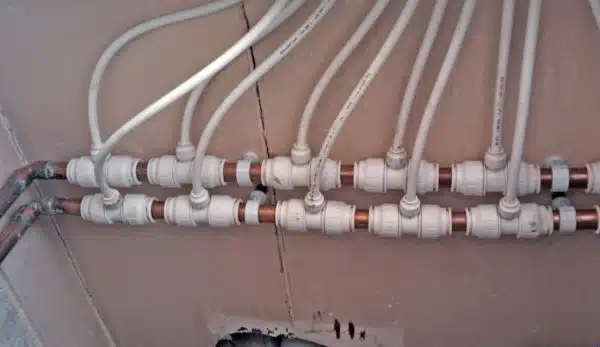


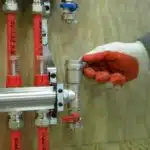

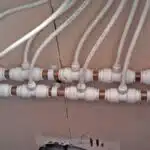

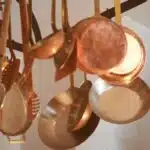





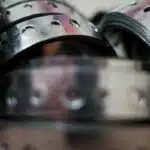



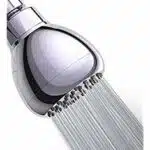

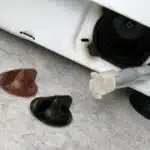


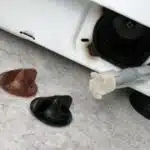
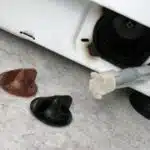




![How To Get Hair Out Of A Bathtub Drain 29 2/365 [Bathtub Drain]](https://green-life.blog/wp-content/uploads/2023/05/cOEu5edpkejq-150x150.jpg.webp)